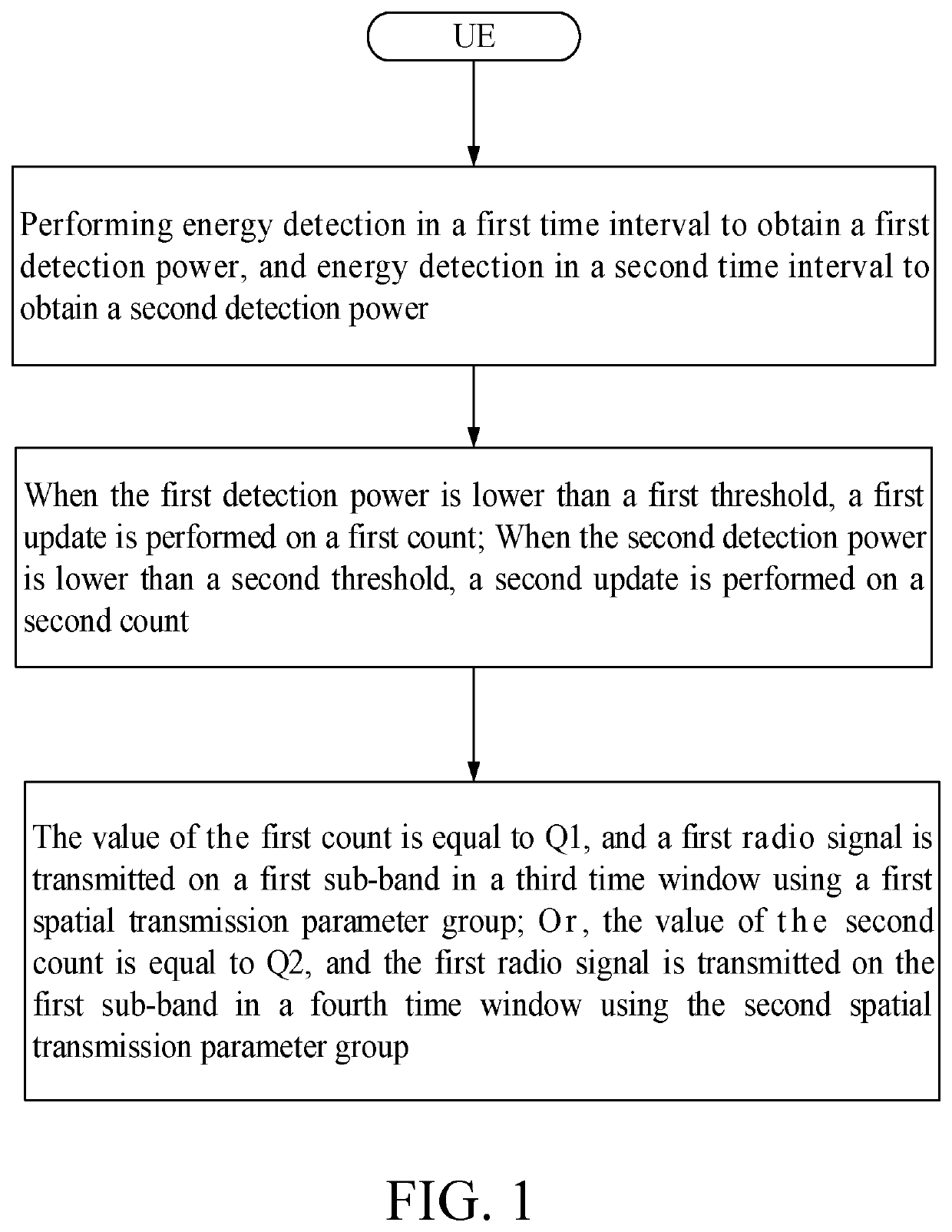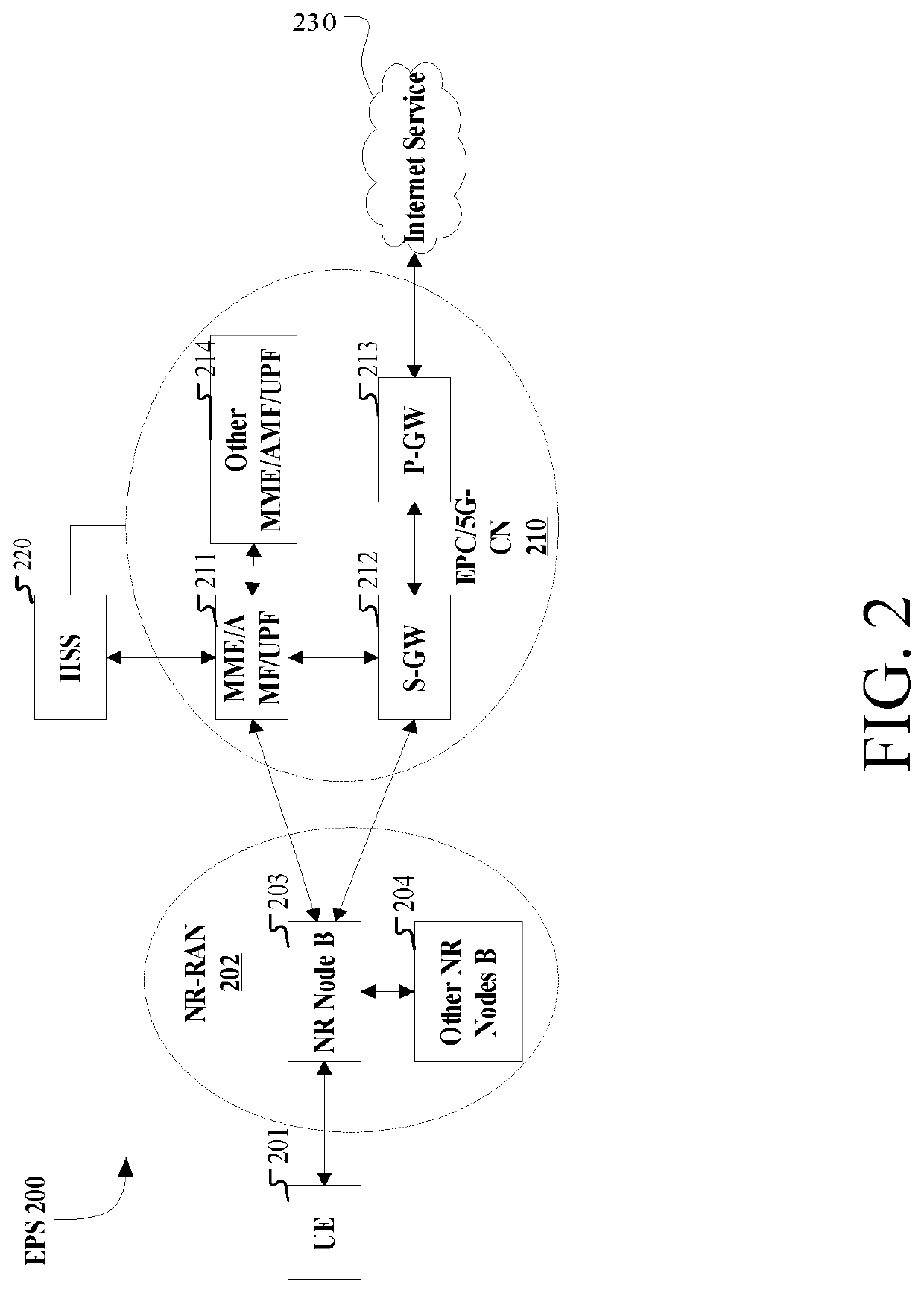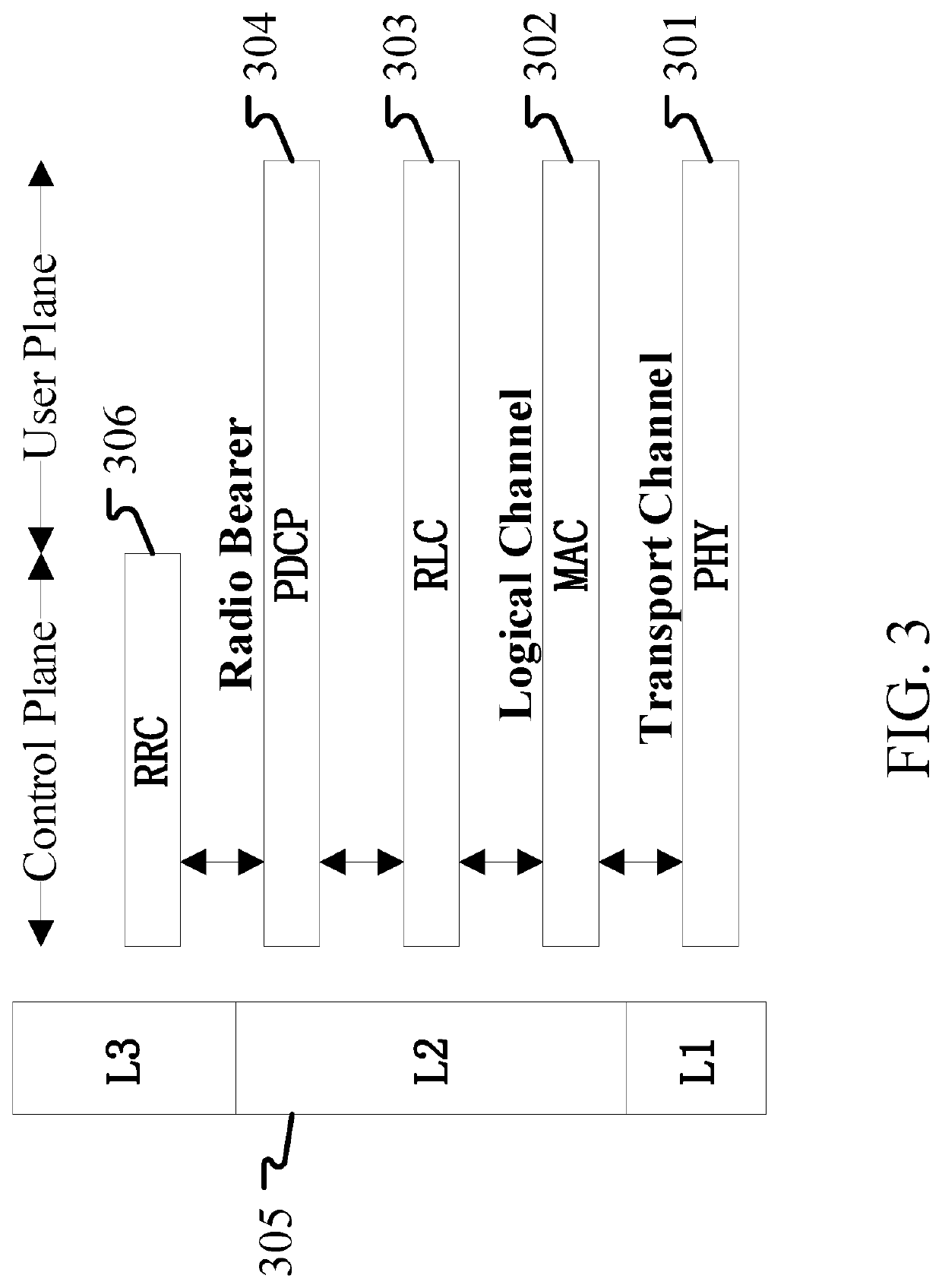Method and device in ue and base station for wireless communication
- Summary
- Abstract
- Description
- Claims
- Application Information
AI Technical Summary
Benefits of technology
Problems solved by technology
Method used
Image
Examples
embodiment 1
[0088]Embodiment 1 illustrates a flowchart of a first radio signal, as shown in FIG. 1.
[0089]In Embodiment 1, the UE in the present disclosure performs energy detection in a first time interval to obtain a first detection power, and energy detection in a second time interval to obtain a second detection power; when the first detection power is lower than a first threshold, a first update is performed on a first count; when the second detection power is lower than a second threshold, a second update is performed on a second count; when a value of the first count is equal to Q1, a first radio signal is transmitted on a first sub-band in a third time window using a first spatial transmit (Tx) parameter group; or, when a value of the second count is equal to Q2, the first radio signal is transmitted on the first sub-band in a fourth time window using the second spatial transmit (Tx) parameter group; the Q1 and Q2 are positive integers respectively.
[0090]In one subembodiment, the UE incl...
embodiment 2
[0168]Embodiment 2 illustrates a schematic diagram of a network architecture, as shown in FIG. 2.
[0169]Embodiment 2 illustrates a schematic diagram of a network architecture according to the present disclosure, as shown in FIG. 2. FIG. 2 shows the network architecture 200 of NR 5G, Long-Term Evolution (LTE) and Long-Term Evolution Advanced (LTE-A). NR 5G or LTE network architecture 200 can be referred to as Evolved Packet System (EPS) 200 or some other appropriate term. EPS 200 may include one or more UE 201, Next Generation Radio Access Network (NG-RAN) 202, Evolved Packet Core (EPC) / 5G-Core Network (5G-CN) 210, Home Subscriber Server (HSS) 220 and Internet Service 230. EPS can be interconnected with other access networks, but these entities / interfaces are not shown for simplicity. As shown in the figure, EPS provides packet switching services, while those skilled in the art will readily understand that various concepts presented throughout the disclosure can be extended to network...
embodiment 3
[0176]Embodiment 3 illustrates a schematic diagram of an example of a radio protocol architecture of a user plane and a control plane according to one embodiment of the present disclosure, as shown in FIG. 3.
[0177]FIG. 3 is a schematic diagram illustrating an embodiment of a radio protocol architecture for a user plane and a control plane. FIG. 3 shows a radio protocol architecture for a UE and a base station (gNB or eNB) in three layers: Layer 1, 2 and 3. Layer 1 (L1) is the lowest layer and implements various physical layer (PHY) signal processing functions. L1 will be called PHY 301 in this article. 305, Layer 2 (L2) is above PHY 301 and is responsible for the link between UE and gNB through PHY 301. In the user plane, 305, L2 includes Medium Access Control (MAC) sublayer 302, Radio Link Control (RLC) sublayer 303 and Packet Data Convergence Protocol (PDCP) sublayer 304, which terminate at the gNB on the network side. Although not shown, UE may have several upper layers above 305...
PUM
 Login to View More
Login to View More Abstract
Description
Claims
Application Information
 Login to View More
Login to View More - Generate Ideas
- Intellectual Property
- Life Sciences
- Materials
- Tech Scout
- Unparalleled Data Quality
- Higher Quality Content
- 60% Fewer Hallucinations
Browse by: Latest US Patents, China's latest patents, Technical Efficacy Thesaurus, Application Domain, Technology Topic, Popular Technical Reports.
© 2025 PatSnap. All rights reserved.Legal|Privacy policy|Modern Slavery Act Transparency Statement|Sitemap|About US| Contact US: help@patsnap.com



